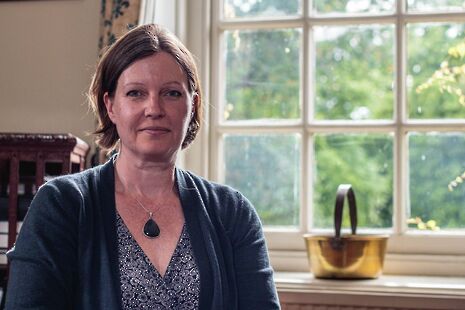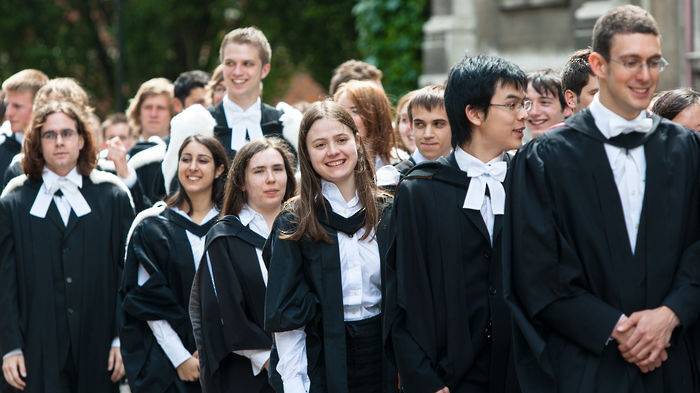Behind the headlines, access efforts still provoke divisions
Access for black students has been in the news again – but will things change?

In February 2003, Varsity splashed its front page with an investigation revealing the “black hole” in Cambridge’s undergraduate admissions. The paper reported that 25 black students had been accepted the year before, and just 12 in the two years before that.
Beneath the headline ‘Colourblind?’ it reported that the access situation was “so dire” that Cambridge had accepted more students with the surname ‘White’ than black undergraduates.
Over a decade and a half later, the capacity for the University’s access statistics to shock remain as present as ever: last year, Varsity reported that 2016 had seen more black men accepted than Etonians for the first time ever – in this year’s stats, that was narrowly maintained.
The acceptances rate for black, Bangladeshi and Pakistani students have remained consistently lower than average, something which the University has historically pinned on an intersection of issues, including the type of course applied to.
Twice this year alone, the University, along with Oxford, has received criticism for its intake of black students. The first was in October, when Labour MP David Lammy blasted Oxbridge colleges as “fiefdoms of entrenched privilege”, and revealed that on average a quarter of Cambridge colleges made no offers to black British applicants from 2010 to 2015.
The second came just weeks ago, as a Financial Times report highlighted low intake numbers based on figures from 2011–2016, focusing particularly on low intake at St Edmund’s College and Hughes Hall.
The University fired back strongly, with the president of Hughes Hall, Dr Anthony Freeling, and Master of St Edmund’s, Matthew Bullock, accusing the FT of employing “misleading interpretations” by ignoring the tiny size of both colleges’ undergraduate cohorts.
The FT piece was amended, but most of its findings were maintained, and the figures it reported were widely picked up in other media outlets. For a casual consumer of news, the message remained clear: black students, at Cambridge, remain an anomaly.
The kickback was strong enough this time, however, that the University released its own formal response, criticising the press coverage, which they said “undermines the progress made in access and the value of a Cambridge education”.
A week later, the University released a photo – organised in conjunction with the African-Caribbean Society (ACS) – showing the black women of Cambridge: over 50 black, female students stood on the steps in front of Senate House. The photoshoot, held to celebrate 70 years since the admission of the first black woman admitted into Cambridge, Gloria Claire Carpenter, echoed ACS’s viral photographs of 15 black male students last year.
Taken together, these incidents encapsulate the ongoing media narrative surrounding the admission of black students – caught between damning statistics, and public displays of diversity.
Dr Sam Lucy, director of admissions for the colleges, said that part of the problem was how low cohort numbers are presented.
“One of my greatest desires is for people actually to get more sensible about their use of statistics,” she said, pointing to reports highlighting individual colleges’ low intake of black students. “It’s where a lot of misinformation comes from, because people just aren’t very adept at interpreting small numbers against much, much bigger data sets.”
Part of the issue with David Lammy’s criticism of individual colleges is that, without significantly more data than is currently released, low application numbers mean that for some colleges not to have accepted any black students is statistically likely – it has only been for roughly the past decade that Cambridge has accepted more black undergraduate students than there are colleges, something the University has been keen to suggest means the fault doesn’t lie at a college level.
“I think everybody has to be very careful when they speak publicly on this,” Lucy said, in reference to Lammy. “Even when it might be your intention, it might be the consequence that this looks like an institution that isn’t open.”
She noted that the MP’s comments “have produced some positive consequences, which isn’t always recognised”, including prompting a significant increase in interest in the access scheme Target Oxbridge, which prompted the University to give it a substantial funding boost – “as a direct result, we think, of the increased media attention around this.”
“I don’t think there is much incentive for much of the press to present our systems in a necessarily fair way,” Lucy said, adding “there’s not much we can do about that”.
She said that admissions tutors would be “furious” at Lammy’s suggestion that colleges remained bastions of the “old school tie”, and that she felt admissions tutors were all working towards the same goals.
She said she was “increasingly confident” that college choice is becoming less of a factor in applicants’ chances of success.
Criticism of colleges often results in calls for increased centralisation of the admissions process, which have come from both Lammy and CUSU, via its current access and funding officer, Olivia Hylton-Pennant. There have been murmurings within the University that it might set specific overall targets for access from underrepresented ethnic groups, though these have not yet materialised into anything concrete.
For Hylton-Pennant, who is approaching the end of her tenure as a sabbatical officer, increased centralisation is the answer.
After declining to co-sign the University’s response to the FT, she said in a post on CUSU’s website: “The University has no clear plan to increase the number of British BME students, nor how it hopes to engage a wide range of stakeholders to support them in their efforts, so how can I defend its current work?”
“Bad PR should not be the driving force behind University commitments to widening participation,” she said, adding “yet this too often feels the case” – highlighting the case of Abdullah Kattineh, a Syrian who was offered a full scholarship after hundreds of people signed an open letter supporting him.
In a new report, she has called for Cambridge to introduce a central outreach initiative to boost ethnic minority access.
The report says “the reasons why students from these ethnic groups are underrepresented are complex,” adding: “Institutional bias, lack of attainment and lack of knowledge about the institution, leading to fear of not fitting in are all valid suppositions.”
Hylton-Pennant’s recommendations, based on systems at other universities worldwide, include the introduction of a full-time access employee whose focus would be organising outreach with BME community leaders and organisations, and the establishment of BME student ambassadors, an idea which has found success at Harvard University. The report says: “The University of Cambridge has a real opportunity to attract more BME students by formally supporting a centralised initiative.”
Dr Nicholas Guyatt, a reader in History based at Trinity Hall, reflected on his experience as an academic with issues surrounding representation require tackling at all levels of the University.
“[The] teaching and admin staff at Cambridge aren’t yet fully representative of the society we’re supposed to serve,” he said. “In my faculty, nearly two-thirds of the staff are male and there are no black British African/Black British Caribbean lecturers – despite the fact that we have nearly a hundred full-time staff employed by the colleges or by the University.”
“It’s great that our student body is becoming more representative, but the goal of improving access can’t be achieved unless women and people of colour are properly represented in staff and admin positions,” he added. “This isn’t an easy problem to solve, but I’d like to see all of us making a public commitment to tackling it. At an institution like Cambridge, which can draw the very best minds from the UK and around the world, diversity and representation ought to be within our reach.”
Lucy emphasised the use of contextual data in processing admissions, but Guyatt called for this to go further. “[I]nterviewers have no data on racial representation when we do interviews,” he said, “and I couldn’t tell you whether my college or faculty have systematically underrepresented particular racial/ethnic groups in recent admissions.”
Echoing Hylton-Pennant’s suggestions, Guyatt said: “I think the University ought to have specialised outreach workers for particular racial/ethnic groups,” adding “I would be amazed if we couldn’t raise money for these posts from alumni who are desperate to see us solve these problems”.
 Comment / Plastic pubs: the problem with Cambridge alehouses 5 January 2026
Comment / Plastic pubs: the problem with Cambridge alehouses 5 January 2026 News / Uni-linked firms rank among Cambridgeshire’s largest7 January 2026
News / Uni-linked firms rank among Cambridgeshire’s largest7 January 2026 News / New movement ‘Cambridge is Chopped’ launched to fight against hate crime7 January 2026
News / New movement ‘Cambridge is Chopped’ launched to fight against hate crime7 January 2026 News / SU stops offering student discounts8 January 2026
News / SU stops offering student discounts8 January 2026 News / Cambridge businesses concerned infrastructure delays will hurt growth5 January 2026
News / Cambridge businesses concerned infrastructure delays will hurt growth5 January 2026










